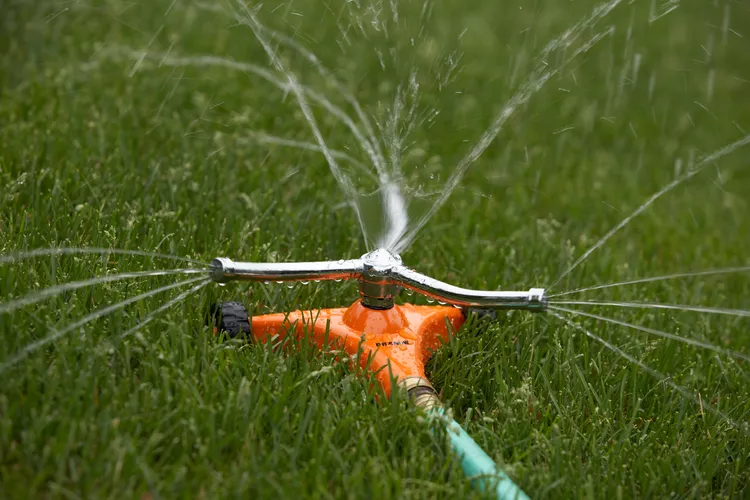During spring, it might feel like your vibrant green lawn effortlessly blankets your yard without requiring much maintenance beyond regular mowing. But when summer arrives and you get a long stretch of hot, dry weather, your grass may go from a lush green carpet to one with large brownish patches. It may even be a little crispy in some places. If you want to keep your lawn lush and green through summer, watering at the right time of day can do a lot to help keep it healthy. Once moisture returns, green foliage usually will start growing again—but it’s all in the timing.
The Best Time of Day to Water Your Lawn
The best time of day to water a lawn is early morning, between 4:00 and 8:00 a.m. The cooler temperatures and minimal wind allow water to soak deeply into the soil without much evaporation. Also, during this window, there’s typically not as much demand for water on municipal systems, which can impact water pressure.
Another benefit to watering so early in the day is that turf grass blades will dry more quickly as the sun rises, reducing the chances of diseases taking hold.
When Not to Water Your Lawn
Watering at midday is less efficient than early in the morning, since evaporation is rapid and strong winds are more common. The winds may increase evaporation and carry water onto driveways, patios, or streets, quickly adding up to a lot of water waste.
Watering in the evening, when dew is prevalent, also sets the scene for fungal growth on grass blades that will remain wet overnight. If those fungi take hold and start killing your grass, no amount of watering will help.
Water Deeply and Infrequently
Increase the benefit of early morning watering by delivering the water not on a schedule but as the grass needs it. Rather than watering for 15 minutes daily, the best time of day to water a lawn is when the it shows signs of drought stress. A blue-gray color and footprints remaining after walking across the turf are sure signs the lawn needs water.
Aim to water lawn grass thoroughly and infrequently to encourage deep root growth. Lawns with deep root systems can mine 12 inches or more into the soil to gather their water and nutrients. Delivering one to one and a half inches of water once every seven to 10 days is usually enough for a healthy, green lawn. Keep in mind factors like soil type, turf type, and prevailing weather conditions will greatly influence how much and how often you need to water. Look to the grass for cues.
Dormancy Is a Good Option
Most types of turf grass can weather extended dry periods easily. They do this by going dormant above ground. While your lawn may look dead during drought, your grass's root systems are generally healthy and robust in dormancy. A lawn can weather a four- to six-week drought with little impact.
If water use is restricted or cost-prohibitive for you, your lawn can go dormant without harm. Resist the urge to sprinkle it lightly from time to time. Light watering is wasteful and ineffective for turf. Trust that it will green up when the weather pattern changes.




















